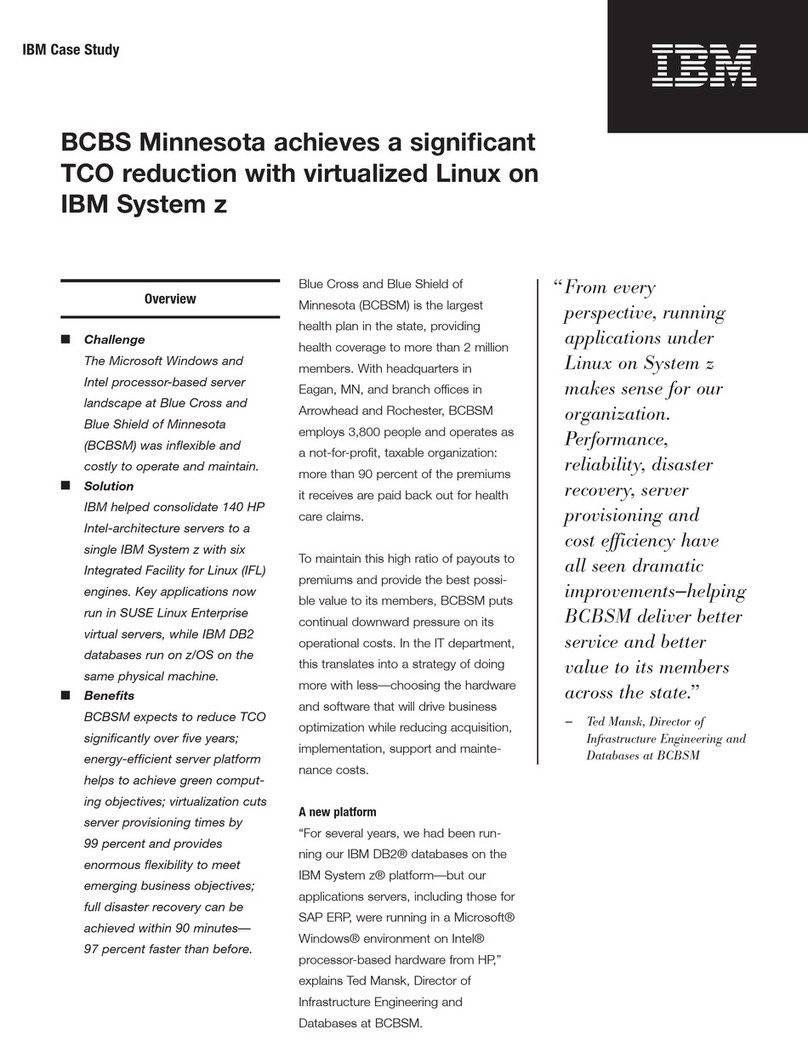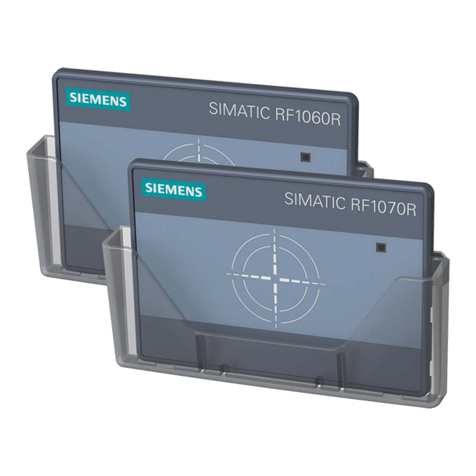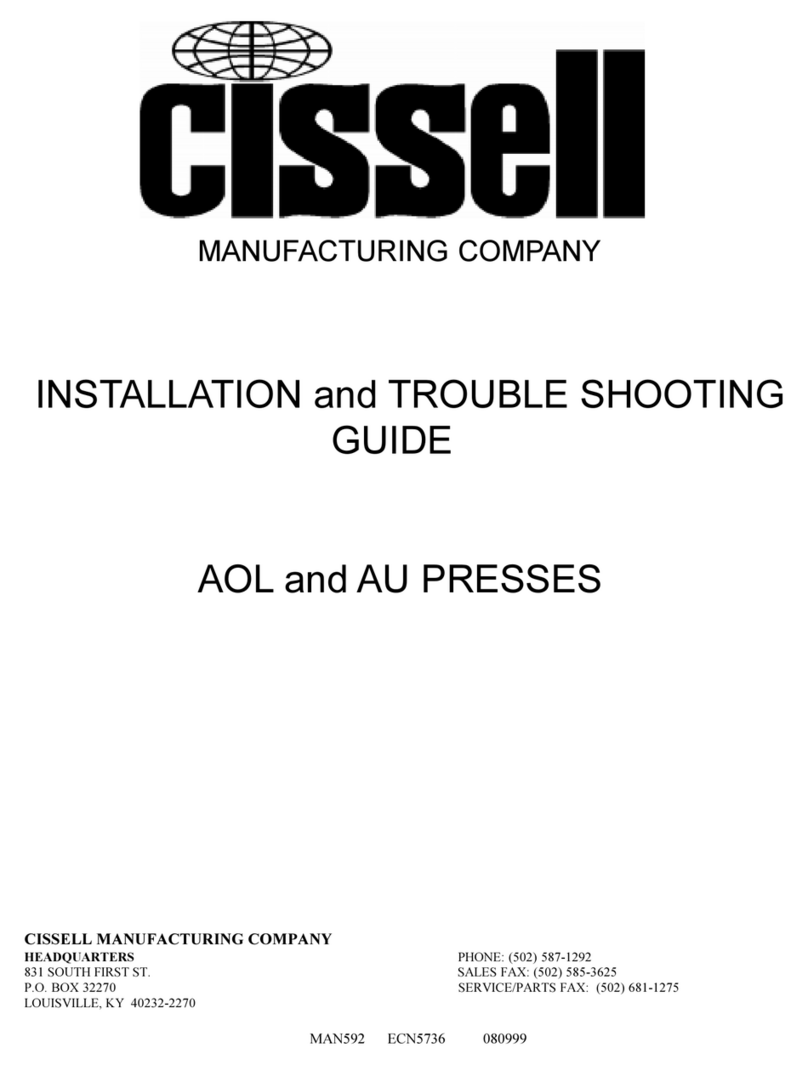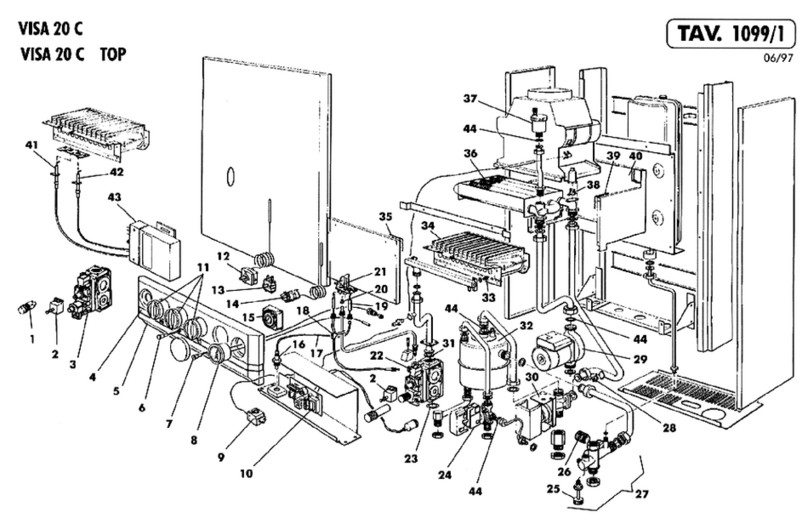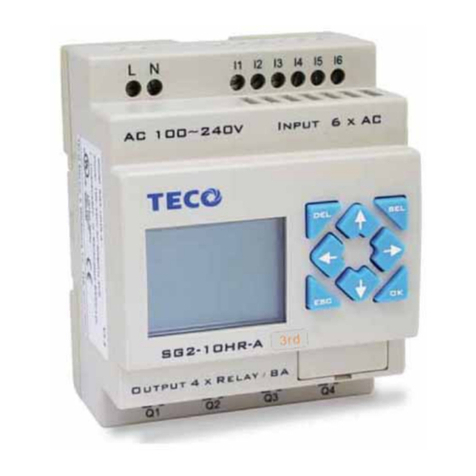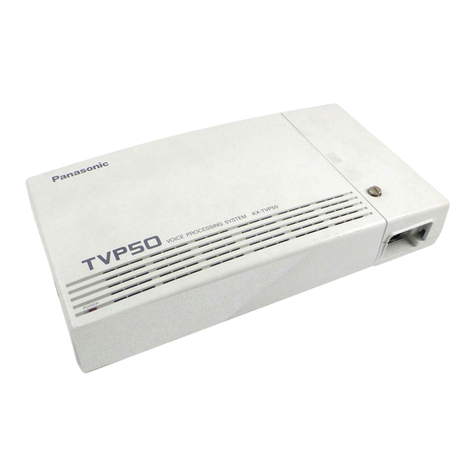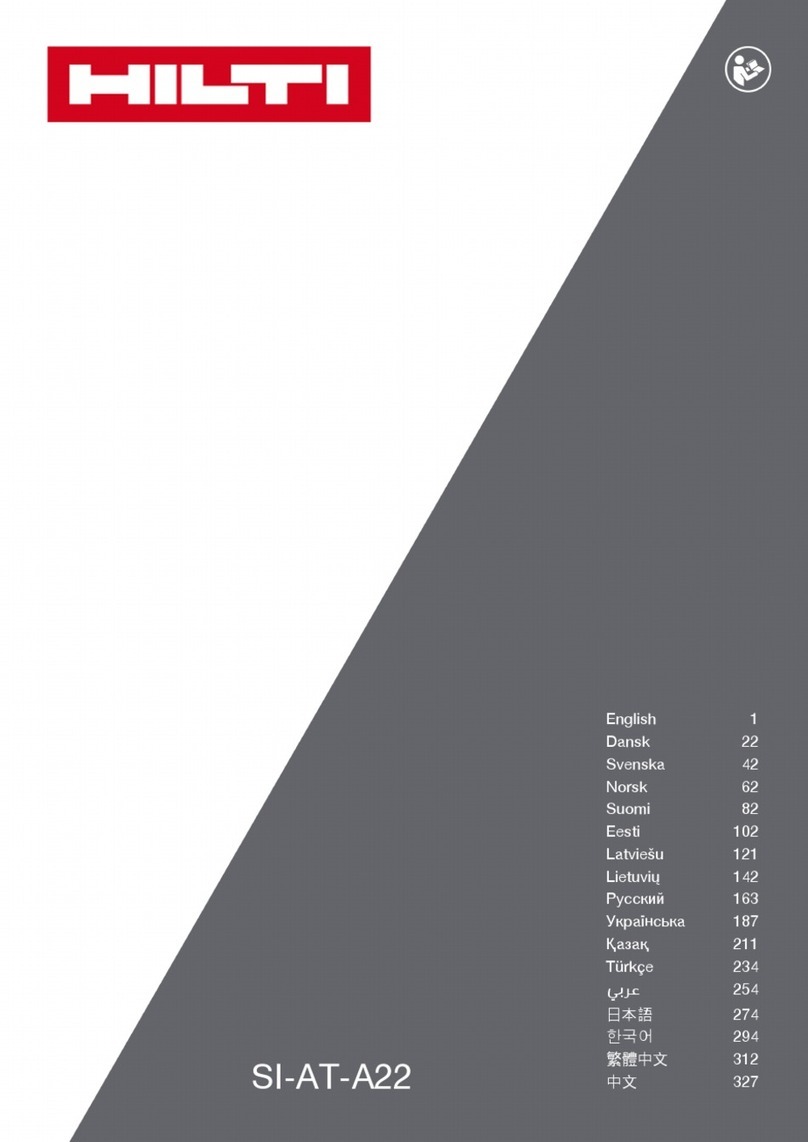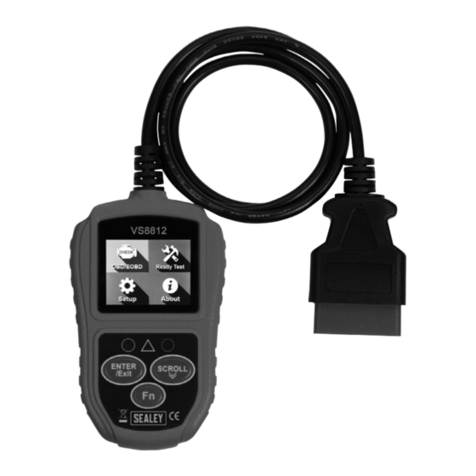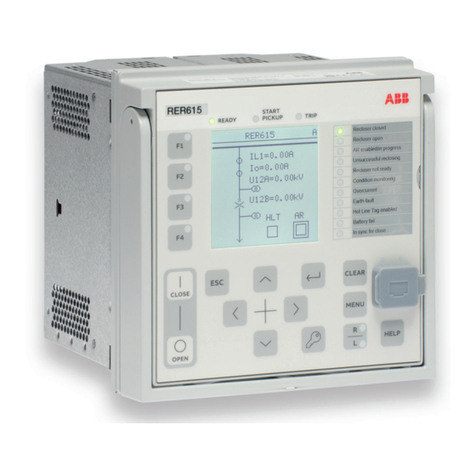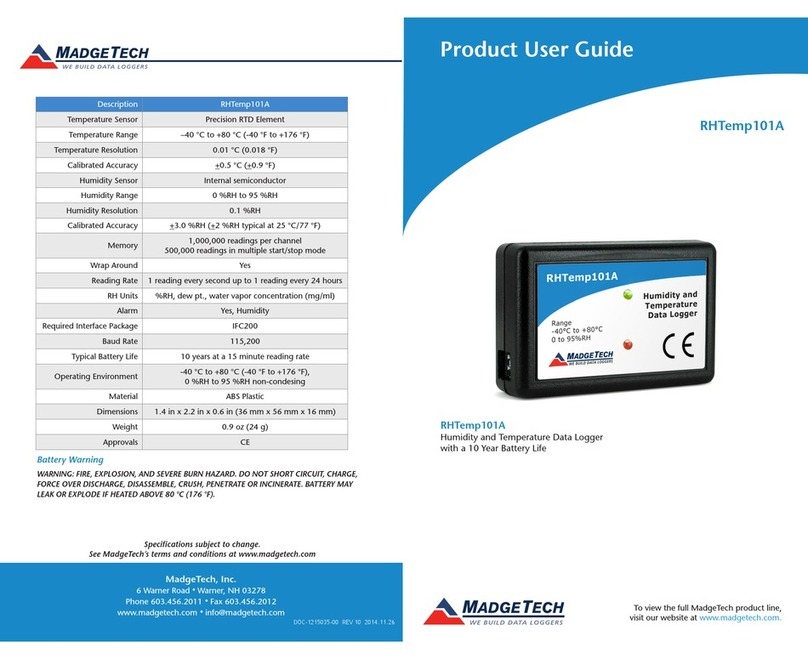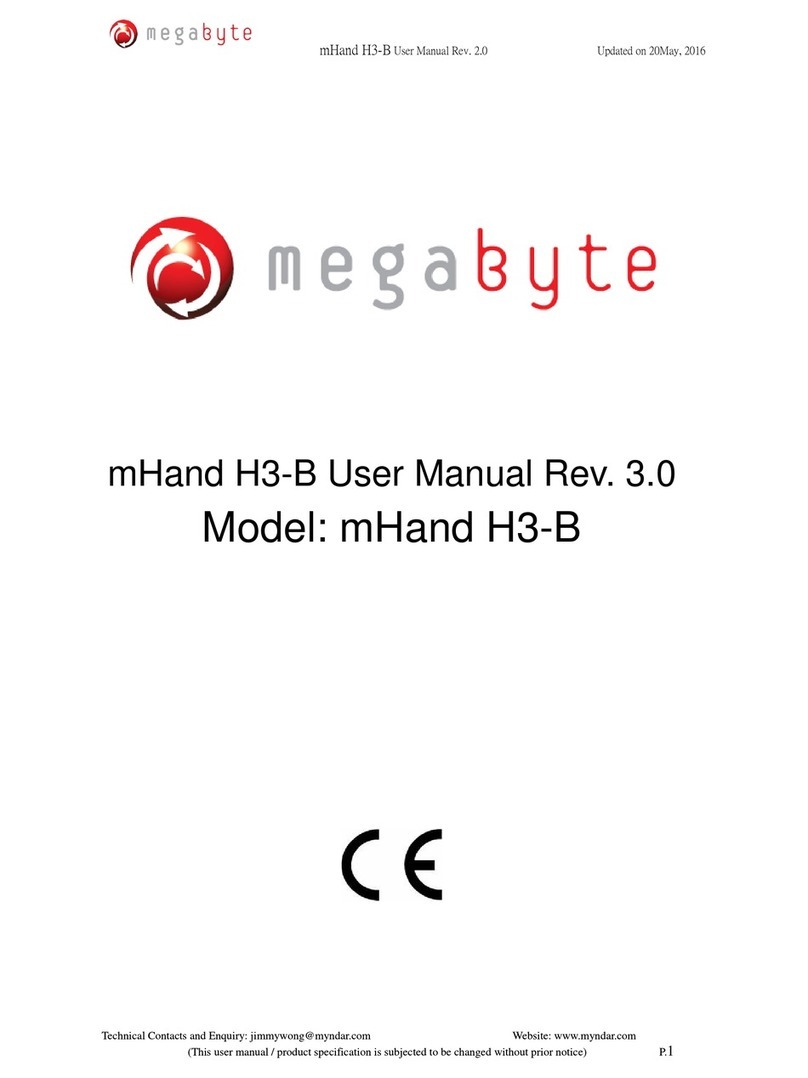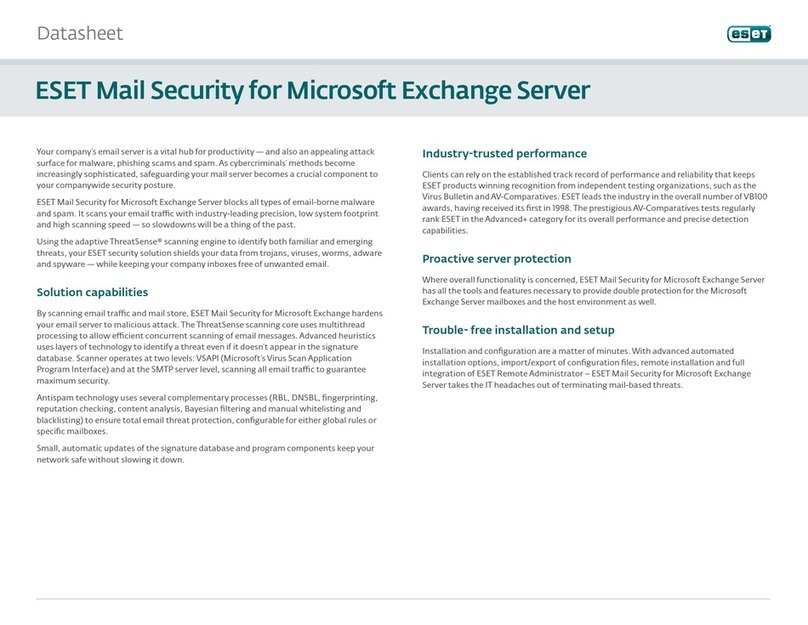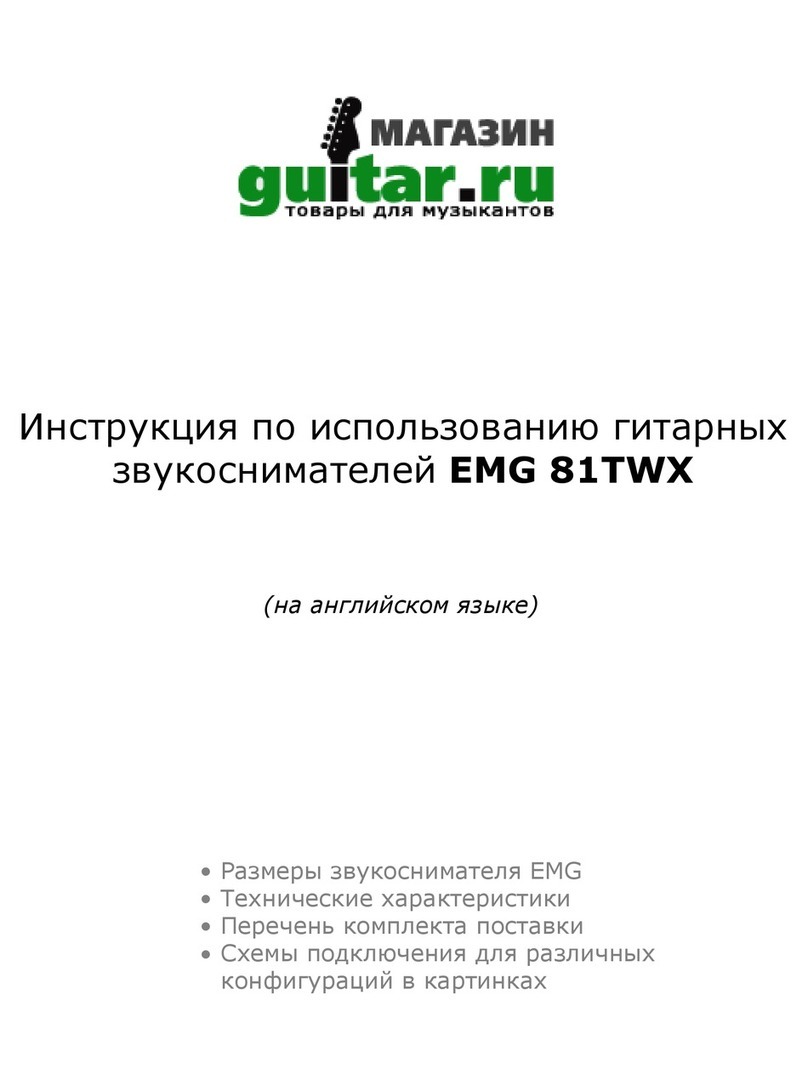Dataq DI-725/E User manual

The way PC-based instrumentation should be
DI-720 Series
32 Channel USB, Ethernet, or Printer Port Data Acquisition System
DI-722 Series
Extended Measurement Range Data Acquisition System
DI-730 Series
High Voltage Range Data Acquisition System
DI-725/E
Channel Expander
DI-78B
8B Module Channel Expander
DI-75B
5B Module Channel Expander
User's Manual
Manual Revision AJ
Copyright © 2009 by DATAQ Instruments, Inc. The Information contained herein is the exclusive property of
DATAQ Instruments, Inc., except as otherwise indicated and shall not be reproduced, transmitted, transcribed, stored
in a retrieval system, or translated into any human or computer language, in any form or by any means, electronic,
mechanical, magnetic, optical, chemical, manual, or otherwise without expressed written authorization from the com-
pany. The distribution of this material outside the company may occur only as authorized by the company in writing.
DATAQ Instruments' hardware and software products are not designed to be used in the diagnosis and treatment of
humans, nor are they to be used as critical components in any life-support systems whose failure to perform can rea-
sonably be expected to cause significant injury to humans.
DATAQ, the DATAQ logo, and WINDAQ are registered trademarks of DATAQ Instruments, Inc. All rights reserved.
241 Springside Dr.
Akron, Ohio 44333 U.S.A.
Telephone: 330-668-1444
Fax: 330-666-5434
Designed and manufactured in the
United States of America
M-100763


Warranty and Service Policy
Product Warranty
DATAQ Instruments, Inc. warrants that this hardware will be free from defects in materials and workmanship under
normal use and service for a period of one year from the date of shipment. DATAQ Instruments' obligations under
this warranty shall not arise until the defective material is shipped freight prepaid to DATAQ Instruments. The only
responsibility of DATAQ Instruments under this warranty is to repair or replace, at its discretion and on a free of
charge basis, the defective material.
This warranty does not extend to products that have been repaired or altered by persons other than DATAQ Instru-
ments employees, or products that have been subjected to misuse, neglect, improper installation, or accident.
DATAQ Instruments shall have no liability for incidental or consequential damages of any kind arising out of the sale,
installation, or use of its products.
Service Policy
1. All products returned to DATAQ Instruments for service, regardless of warranty status, must be on a freight-pre-
paid basis.
2. DATAQ Instruments will repair or replace any defective product within 5 days of its receipt.
3. For in-warranty repairs, DATAQ Instruments will return repaired items to the buyer freight prepaid. Out of war-
ranty repairs will be returned with freight prepaid and added to the service invoice.


v
CAUTION
READ BEFORE CONNECTING INPUT SIGNALS
The data acquisition device you have purchased and are about to use contains input channels that are NOT ISO-
LATED (all channels on DI-72x products are not isolated; only the expansion channels of DI-730 instruments are not
isolated). This means that it is susceptible to common mode voltages that could cause damage to the device. SUCH
DAMAGE IS NOT COVERED BY THE PRODUCT’S WARRANTY. Please read the following carefully before
deploying the product. Contact DATAQ Instruments Support at 330-668-1444 for all questions.
This product can tolerate a maximum applied voltage of only ±20V peak without damage. Although you may be cer-
tain that the signal you want to measure is lower than this level, a common mode voltage (CMV) with an unknown
value may combine with your signal of interest to exceed this ±20V limit. In such instances, the product will be dam-
aged. Verify a CMV does not exist before connecting signals and acquiring data with your device. Use the following
procedure to check for CMV:
1. DO NOT connect your data acquisition device to the device under test. If the device under test is connected to
your data acquisition device, disconnect it.
2. Connect your data acquisition device to the appropriate interface on your PC (USB, Ethernet, RS-232 Serial, or
Parallel Printer Port).
3. Apply power to your data acquisition device, your PC, and the device under test.
4. Use a digital voltmeter to make the following measurements:
a. Measure the voltage (both the AC and DC range) between the ground terminal of your data acquisition
device and Signal+ of the device under test. This measurement should not exceed the Full Scale Range of
your data acquisition device.
b. Measure the voltage (both the AC and DC range) between the ground terminal of your data acquisition
device and Signal- of the device under test. This measurement should be at or very near 0 Volts.
c. Measure the voltage (both the AC and DC range) between the ground terminal of your data acquisition
device and Common of the device under test. This measurement should be at or very near 0 Volts.
5. Should ANY of these measurements exceed their recommendation DO NOT CONNECT SIGNALS to the data
acquisition device. A common mode voltage may exist that could destroy the instrument. You MUST determine
the source of the CMV and eliminate it before taking any measurements.
1Measured signal is not to exceed the Full Scale Range of your data acquisition device.
2Measured signal must be at or very near 0 volts.
3Measured signal must be at or very near 0 volts.
4Connect to AGD (Analog Ground) port on DI-72x (all input channels), and DI-730 (expansion channels only) instruments.
!
!
Device
Under
Test
Signal + 1
Signal - 2
Common3
Digital Voltmeter
Data
Acquisition
Device
To PC
Ground4


DI–720/DI–722/DI–730 Series User Manual
Table of Contents
vii
Table of Contents
Warranty and Service Policy ................................................................................................................ iii
CAUTION ........................................................................................................................................... v
1. Introduction ........................................................................................................................................ 1
Features .............................................................................................................................................. 1
Analog Input ...................................................................................................................................... 1
Analog Output ................................................................................................................................... 2
Digital Input and Output (DI-720 Series Only) ................................................................................. 2
2. Specifications ...................................................................................................................................... 3
3. Getting Started ................................................................................................................................... 7
Unpacking .......................................................................................................................................... 7
Applying Power to the DI-7xx Series Instrument ............................................................................. 7
Printer Port Instrument Installation ................................................................................................... 8
USB Instrument Installation .............................................................................................................. 10
Ethernet Instrument Installation ........................................................................................................ 12
Installing an Ethernet Device Directly Connected to your PC or Connected via a Hub/Switchwhere
ONLY DI-72x, DI-730, or DI-78x Products are Installed .......................................................... 13
Installing an Ethernet device via a distributed network without a DHCP server where one or more
DATAQ Instruments devices will coexist with other Ethernet devices, and where static IP address
are individually assigned ............................................................................................................. 15
Installing an Ethernet device via a distributed network with a DHCP server ............................. 17
Connecting your Ethernet Instrument to your PC or Network ................................................... 17
Installing WinDaq software for Ethernet Products ..................................................................... 18
Daisy-Chaining Multiple Ethernet Products ............................................................................... 19
TCP/IP Manager (Ethernet Models Only) .................................................................................. 20
WinDaq Waveform Navigator (Ethernet models only) .............................................................. 21
4. Instrument Controls, Indicators, and Connectors .......................................................................... 23
DI-720 Series Instrument Front Panel ............................................................................................... 23
DI-722 Series Instrument Front Panel ............................................................................................... 25
DI-730 Series Instrument Front Panel ............................................................................................... 27
DI-720, DI-722, and DI-730 Series Instrument Rear Panel .............................................................. 28
5. Calibration Verification ..................................................................................................................... 31
Required Equipment .......................................................................................................................... 31
A/D Calibration (For DI-720, DI-722, and DI-730 Series Instruments) .................................... 31
D/A Calibration (DI-720 Instruments Only) ............................................................................... 31
A/D Calibration Verification (DI-720, DI-722, and DI-730 Series Instruments) ............................. 31
D/A Calibration (DI-720 Series Only) .............................................................................................. 32
Offset Calibration Verification (DI-720 and DI-722 Instruments Only) .......................................... 33
Full Scale (Span) Calibration Verification (DI-720 and DI-722 Instruments Only) ......................... 33
Offset Calibration Verification (DI-730 Instruments only) ............................................................... 34
Full Scale (Span) Calibration Verification (DI-730 Instruments Only) ............................................ 34
6. Block Diagram..................................................................................................................................... 35
DI-720 Series ..................................................................................................................................... 35
DI-722 Series ..................................................................................................................................... 36
DI-730 Series (Analog Input) ............................................................................................................ 37
Ethernet Instruments .......................................................................................................................... 38

DI–720/DI–722/DI–730 Series User Manual
Table of Contents
viii
7. Accessories .......................................................................................................................................... 39
The DI-705: Signal Input/Output Option .......................................................................................... 40
General ........................................................................................................................................ 40
Input Signal Configuration .......................................................................................................... 40
The DI-205: Signal Input/Output Panel ............................................................................................. 41
General ........................................................................................................................................ 41
DI-205 Input/Output Panel Interconnections .............................................................................. 41
Input Signal Configuration .......................................................................................................... 41
Connecting a Single-ended Amplifier .................................................................................. 42
Connecting a Differential Amplifier ..................................................................................... 42
DI-725(E) Channel Expansion Unit .................................................................................................. 46
Connecting the DI-725 to the Host Instrument ........................................................................... 46
Features, Controls, and Indicators ............................................................................................... 46
DI-725 Front Panel ............................................................................................................... 46
DI-725 Rear Panel ................................................................................................................ 47
Configuring Channels with the DI-725 ....................................................................................... 48
DI-400 Host Instruments ...................................................................................................... 49
DI-720 Host Instruments ...................................................................................................... 50
DI-730 Host Instruments ...................................................................................................... 51
DI-78B 8B Module Channel Expander ............................................................................................. 52
Connecting the DI-78B to the Host Instrument .......................................................................... 52
Applying Power to the DI-78B ................................................................................................... 52
Features, Controls, and Indicators ............................................................................................... 53
DI-78B Front Panel .............................................................................................................. 53
DI-78B Rear Panel ................................................................................................................ 54
Installing DI-8B Modules ........................................................................................................... 54
Enabling CJC for Thermocouple Modules ................................................................................. 56
Configuring DI-78B Channels in WinDaq ................................................................................. 56
DI-720 Host Instruments ...................................................................................................... 57
DI-730 Host Instruments ...................................................................................................... 58
Configuring DI-78B Channel Gain (you MUST configure gain for proper readings) ......... 58
DI-8B Modules .................................................................................................................................. 60
DI-8B30/31 Analog Voltage Input Modules, 3Hz Bandwidth ................................................... 60
DI-8B32 Analog Current Input Modules .................................................................................... 61
DI-8B34 Linearized 2- or 3-Wire RTD Input Modules .............................................................. 62
DI-8B35 Linearized 4-Wire RTD Input Modules ....................................................................... 63
DI-8B36 Potentiometer Input Modules ....................................................................................... 64
DI-8B38 Strain Gage Input Modules, Narrow & Wide Bandwidth ............................................ 65
DI-8B40/41 Analog Voltage Input Modules, 1kHz Bandwidth ................................................. 66
DI-8B42 2-Wire Transmitter Interface Modules ........................................................................ 67
DI-8B45 Frequency Input Modules ............................................................................................ 68
DI-8B47 Linearized Thermocouple Input Modules .................................................................... 69
DI-8B50/51 Analog Voltage Input Modules, 20kHz Bandwidth ............................................... 70
DI-75B 5B Module Channel Expander ............................................................................................. 71
Connecting the DI-75B to the Host Instrument .......................................................................... 71
Applying Power to the DI-75B ................................................................................................... 71
Features, Controls, and Indicators ............................................................................................... 72
DI-75B Front Panel .............................................................................................................. 72
DI-75B Rear Panel ................................................................................................................ 73
Configuring Channels with the DI-75B ...................................................................................... 74

DI–720/DI–722/DI–730 Series User Manual
Table of Contents
ix
DI-72x Host Instruments ...................................................................................................... 75
DI-730 Host Instruments ...................................................................................................... 76
Configuring Host Instrument Channel Gain ............................................................................... 77
DI-5B Modules .................................................................................................................................. 78
DI-5B30/31 Analog Voltage Input Modules, Narrow Bandwidth .............................................. 78
DI-5B32 Analog Current Input Modules .................................................................................... 79
DI-5B33 Isolated True RMS Input Modules .............................................................................. 80
DI-5B34 Linearized 2- or 3-Wire RTD Input Modules .............................................................. 81
DI-5B35 Linearized 4-Wire RTD Input Modules ....................................................................... 83
DI-5B36 Potentiometer Input Modules ....................................................................................... 85
DI-5B38 Strain Gage Input Modules, Narrow & Wide Bandwidth ........................................... 86
DI-5B40/41 Analog Voltage Input Modules, Wide Bandwidth ................................................. 88
DI-5B42 2-Wire Transmitter Interface Modules ........................................................................ 89
DI-5B43 Isolated DC Transducer Amplifier Input Module ........................................................ 90
DI-5B45 Frequency Input Modules ............................................................................................ 92
DI-5B47 Linearized Thermocouple Input Modules .................................................................... 93
DI-5B48 Accelerometer Input Modules ..................................................................................... 95


DI–720/DI–722/DI–730 Series User Manual
Introduction
1
1. Introduction
Congratulations on your purchase of a DI-720, DI-722, or DI-730 Series data acquisition instrument. This manual
describes how to connect and use all of the instruments in the DI-720, DI-722, and DI-730 Series plus the available
accessories and expanders. Throughout the majority of this manual, enough similarity exists to describe all instru-
ments with the same procedure. The convention used to annotate this similarity is “DI-7xx Series.” In cases where the
resemblance is not the same, separate procedures/descriptions exist for each instrument.
Features
The DI-7xx Series has the following features:
• All instruments connect to the printer port of any PC-compatible computer. Most communicate in standard,
bi-directional or EPP mode. Models DI-720-EN, DI-722-EN, and DI-730-EN add optional Ethernet commu-
nication. DI-720-USB, DI-722-USB, and DI-730-USB add optional USB communication.
• Per channel software-configurable settings including input gain, sample rate, intelligent oversampling
modes (signal averaging, maximum value, minimum value, and last point), and single-ended or differential
input.
• DI-720 Series Instruments offer 32 single-ended/16 differential (software selectable per channel) general
purpose inputs (±10V Full Scale).
• DI-722-16 Series Instruments offer 16 fixed differential extended measurement range (±20V Full Scale)
inputs and 16 single-ended/8 differential (software selectable per channel) general purpose (±10V Full
Scale) inputs.
• DI-722-32 Series Instruments offer 32 extended measurement range differential inputs (±20V Full Scale).
• DI-730 Series Instruments offer 8 fixed isolated high voltage range (±1000V Full Scale) differential inputs
and 16 general-purpose (±10V Full Scale) non-isolated inputs (available through the EXPANSION (USB
and PP models) or Channel Expansion (EN models) connector on the rear of the instrument). General pur-
pose inputs are connected directly to a multiplexer. Each channel can be configured for single-ended or dif-
ferential operation on a channel-by-channel basis. General-purpose inputs can have gain factors of 1, 2, 4 or
8 applied on a channel-by-channel basis.
• Ethernet Instruments provide synchronous distributed data acquisition through CAT-5 Ethernet cables (con-
nected through the Expansion port).
• Flexible power requirements. All instruments operate from any standard 60Hz, 120V AC wall outlet with
the supplied power adapter. Alternately, you may power the instrument from any +9 to +36 volt DC source.
• High sample throughput rates. The DI-720 can record at up to 200KHz throughput. The DI-722 Series can
record at up to 50KHz throughput. The DI-730 Series can record at up to 150KHz throughput. See “Analog
Inputs” on page 3 for full sample rate specifications.
• Analog-to-Digital converters. DI-720 and DI-722 Series provide 16-bit A/D converters for high-resolution
measurement accuracy (14 bits maximum resolution using WINDAQ software). DI-730 Series provide a 14-
bit A/D converter.
• Supports analog pre- and post-triggering of data acquisition based on the level and slope of a specified chan-
nel.
Analog Input
32 single-ended/16 differential analog inputs (on DI-720 Series instruments), 16 singled-ended/24 differential analog
inputs (on DI-722-16 Series instruments), 32 differential analog inputs (on DI-722-32 Series instruments) or 8 fixed

DI–720/DI–722/DI–730 Series User Manual
Introduction
2
differential analog inputs plus 16 general purpose non isolated inputs (on DI-730 Series instruments) allow your ana-
log signals to be converted into 14-to-16-bit digital data via the on board A/D converter.
DI-720 Series Instruments feature software-programmable input measurement ranges of ±10V, ±5V, ±2.5V, and
±1.25V full scale with gain ranges of 1, 2, 4, and 8 for all channels.
DI-722 Series Instruments feature software programmable input measurement ranges of ±20V, ±10V, ±5V, and ±2.5V
full scale with gain ranges of 1, 2, 4, and 8 for all fixed differential extended measurement range inputs. General-pur-
pose inputs feature software-programmable input measurement ranges of ±10V, ±5V, ±2.5V, and ±1.25V full scale
with gain ranges of 1, 2, 4, and 8.
DI-730 Series Instruments feature software programmable input measurement ranges of ±10mV, ±100mV, ±1V,
±10V, ±100V and ±1000V full scale with gain ranges of 1, 10, 100, 1000, 10000, and 100000 for the 8 fixed isolated
high voltage range differential inputs. General-purpose inputs feature software-programmable input measurement
ranges of ±10V, ±5V, ±2.5V, and ±1.25V full scale with gain ranges of 1, 2, 4, and 8.
Analog Output
On DI-720 and DI-722 instruments, the D/A subsystem features two buffered, 12-bit D/A converters for outputting
analog data. DI-730 instruments have one 12-bit D/A converter. DI-7xx Series instruments feature a software-pro-
grammable output range of ±10V and feature an on-board 16-entry output counter list that allows you to write analog
or digital output at the maximum conversion rate of the instrument.
Note: Analog output is not available in DI-7xx Ethernet and USB modules while Analog Input is being used.
Digital Input and Output (DI-720 Series Only)
The DI-720-P contains 8 digital input and 8 digital output lines for input/output operations. These lines provide an
interface for the transfer of data between user memory and a peripheral device connected to the instrument. Digital
inputs can monitor alarms or sensors with TTL outputs, while digital outputs can drive TTL inputs on control or mea-
surement equipment. The DI-720-EN and DI-720-USB have 8 digital input and 4 digital output lines available.

DI–720/DI–722/DI–730 Series User Manual
Specifications
3
2. Specifications
Signal Connections
Make signal connections to the two 37-pin, D-type connectors on the front panel of DI-720/722 Series instruments
or to the banana jacks on the front panel of DI-730 Series instruments. On DI-720 Series instruments, signal connec-
tions can also be made with the DI-205 (optional) general purpose signal interface providing convenient banana
jacks for analog input signals. See “The DI-205: Signal Input/Output Panel” on page 41 for more information. Note:
the DI-205 is an extra-cost option and is not included with the purchase of a DI-720 Series instrument.
Interface Characteristics
Compatible computer architecture: Any PC architecture. Connects to computer via the parallel (or printer)
port. Supports standard, bi-directional, or EPP communication modes.
Optional communication interfaces include Ethernet and Universal
Serial Bus (USB).
Analog Inputs
Number of input channels:
DI-720 Series 32 single-ended/16 differential (software selectable per channel)
DI-722-16 Series 24 differential, 16 single-ended (software selectable on channels 17-32)
DI-722-32 Series 32 differential
DI-730 Series 8 isolated fixed differential plus 16 non-isolated general purpose inputs
(16 single ended or 8 differential)
Converter resolution: DI-72x: 16-bit; 14-bit when used with WINDAQ software
DI-730: 14-bit
Common mode rejection ratio: DI-72x: 80 dB minimum @ Av=1
DI-730: 120 dB minimum @ DC to 60Hz
Accuracy: Vin <= 800V ±(0.25% of full-scale range ±100µv)
Vin > 800V ±(0.5% of full-scale range)
Crosstalk: -75 dB @100kHz (50 KHz for DI-722) into 100 Ωunbalanced
Sample throughput rate (max samples/second; software selectable per channel):
Standard Printer Port DI-720, DI-722, and DI-730: 40,000 samples/second max
Bi-directional Printer Port DI-720: 80,000 samples/second max
DI-722: 50,000 samples/second max
DI-730: 80,000 samples/second max
EPP Printer Port DI-720: 200,000 samples/second max
DI-722: 50,000 samples/second max
DI-730: 150,000 samples/second max
USB DI-720: 200,000 samples/second max
DI-722: 50,000 samples/second max
DI-730: 150,000 samples/second max
Ethernet DI-720: 180,000 samples/second max
DI-722: 50,000 samples/second max
DI-730: 150,000 samples/second max

DI–720/DI–722/DI–730 Series User Manual
Specifications
4
Maximum analog measurement range (software selectable per channel):
DI-720 Series and DI-722/DI-730 gen-
eral purpose channels ±10V full scale at a gain of 1
±5V full scale at a gain of 2
±2.5V full scale at a gain of 4
±1.25V full scale at a gain of 8
DI-722 Series Amplified ±20 V full scale at a gain of 1
±10 V full scale at a gain of 2
±5 V full scale at a gain of 4
±2.5 V full scale at a gain of 8
DI-730 Series ±10mV full scale
±100mV full scale
±1V full scale
±10V full scale
±100V full scale
±1000V full scale
Maximum Input without Damage (either input to ground):
DI-720: ±30VDC or Peak AC
DI-722: 120V RMS
DI-730: ±1500VDC or Peak AC (8 high voltage channels only)
Gain error: 1 bit max @ 1kHz sample rate
Input offset voltage: 1 bit max @ 1kHz sample rate
Input settling time: 4µs to 0.01% at all gains
Input impedance: DI-720: 1 MΩresistor tied to GND on the input channel
DI-722: 1 MΩ
DI-730: 10 MΩ
Maximum jitter between synchronized units: 5 microseconds
Analog Outputs
Number of channels: DI-720: Two buffered analog outputs
DI-722: None
DI-730: One analog output
Resolution: 12-bit; 1 part in 4,096 @ 250kHz
Output voltage range: ±10V full scale
Output impedance: 0.1Ω- output current should not exceed 1mA (10KΩload or lighter)
Maximum Sample rate (samples/second):
(software selectable per channel) standard port: 40,000
bi-directional port: 80,000
EPP: 150,000
Output offset voltage: 1 bit max @ 1kHz sample rate
Digital Input/Output (DI-720 Series Only)
Capacity: 8 input and 8 output
Compatibility: TTL compatible
Max source current: 0.4mA @ 2.4V
Max sink current: 8mA @ 0.5V
Digital input termination: 4.7kΩpull-up to +5VDC

DI–720/DI–722/DI–730 Series User Manual
Specifications
5
Timing Input/Output
Number of counters: 240 input, 16 output
Resolution: 1 part in 32,768
Base clock accuracy: 0.005% or 50ppm
Counter input frequency: 16 MHz
Scan Lists
Input Scan List: USB: Capacity—128 elements
Printer Port and Ethernet: Capacity—240 elements
Output Scan List: Capacity—16 elements
Triggering
Pre-trigger length and Post-trigger length: Printer Port and Ethernet products: (Pre-trigger points + Post-trigger
points) × the number of enabled channels must be less than or equal to
64,000
USB products: (Pre-trigger points + Post-trigger points) × the number
of enabled channels must be less than or equal to 15,000
Trigger channel: Any channel
Trigger level hysteresis: 8-bit (256 counts)
On-board DSP
Type: Analog Devices ADSP2181, 32 MIPS
Clock frequency: 16 MHz external, 64 MHz internal
Data memory: 16k words
Program memory: 16k words
Physical/Environmental
Box dimensions: 7.29"W × 9"L × 1.52"H
I/O connector: DI-720: 37-pin male D-type
DI-722: 37-pin male D-type
DI-730: Banana jacks
Weight: approx. 3 lbs.
Operating environment:
Component temperature 0º to 70º C
Relative humidity 0% to 90% non-condensing
Storage environment:
Temperature -40º to 100º C
Relative humidity 0% to 90% non-condensing
Power Supply Voltage and Power Consumption
Voltage: 9-36 VDC

DI–720/DI–722/DI–730 Series User Manual
Specifications
6
Power: DI-720: 4.5 Watts
DI-722: 10 Watts
DI-730: 14 Watts

DI–720/DI–722/DI–730 Series User Manual
Getting Started
7
3. Getting Started
Unpacking
The following items are included with each DI-720, DI-722, or DI-730 Series instrument. Verify that you have the
following:
• Your DI-720, DI-722, or DI-730 Series Instrument.
• Printer Port communications cable to connect the DI-7xx Series instrument to your computer's printer port.
• A USB cable (models DI-720-USB, DI-722-USB, or DI-730-USB only). Ethernet models do not include an
Ethernet cable.
• The WINDAQ Resource CD. The WINDAQ Resource CD contains all software required to run your instrument.
If you ordered WINDAQ/Pro or WINDAQ/Pro+ recording software (an extra-cost option), there will be a
sticker with a password on the sleeve of your CD-ROM. This password will give you access to that software.
If you did not order WINDAQ/Pro or WINDAQ/Pro+ recording software, the WINDAQ/Lite recording soft-
ware will be available to you for free without a password.
If an item is missing or damaged, call DATAQ Instruments at 330-668-1444. DATAQ support will guide you through
the appropriate steps for replacing missing or damaged items. Save the original packing material in the unlikely event
that your unit must, for any reason, be sent back to DATAQ Instruments.
Applying Power to the DI-7xx Series Instrument
Use the following procedure to apply power to your DI-7xx Series instrument:
1. Plug the five-pin DIN end of the power adapter cable into the five-pin jack labeled POWER on the rear panel of
the instrument.
Power Adapter
To power supply (outlet)
Rear Panel
Power Adapter Cable
DI-720 or DI-730 Series Instrument

DI–720/DI–722/DI–730 Series User Manual
Getting Started
8
2. Plug the appropriate end of the supplied power cord into the power adapter and the other end into any standard
120VAC, 60Hz, single-phase outlet. If an alternate power source is to be used, refer to the following pin-out dia-
gram for power requirements:
3. Turn the POWER switch on.
Printer Port Instrument Installation
All DI-7xx Series instruments can use your computer's parallel (or printer) port to interface digital and analog signals
to your computer. Ethernet/USB models provide Ethernet or USB communication ports (cannot be used concurrently
with the printer port).
1. Plug the appropriate end of the supplied parallel communications cable to the 25-pin male connector labeled
PRINTER PORT on the rear panel of the DI-7xx Series instrument.
2. Connect the other end of this cable to your computer's parallel (printer) port. Note the LPT port number to which
you connected your device (LPT1, LPT2, etc.).
3. Set up your computer’s Printer Port operating mode. The parallel port may be set up in Standard, Bi-directional,
or EPP mode to communicate with your instrument. Choose a parallel port mode based on the desired sample
rate:
Parallel Port Mode Maximum Data Throughput*
Standard DI-720, DI-722, and DI-730: 40,000 samples/second
Bi-directional (PS/2) DI-720 and DI-730: 80,000 samples/second
DI-722: 50,000 samples/second
EPP DI-720: 200,000 samples/second
DI-722: 50,000 samples/second
DI-730: 150,000 samples/second
*Maximum stream-to-disk rate using WINDAQ software on a 350 MHz Pentium II machine
running Windows 98. Triggered storage rates will be faster. Contact DATAQ Instruments to
determine expected maximum sample rates for other machine speeds and operating systems.
+9 to +36 V Common
To printer port on PC
Rear Panel
Printer Port Cable
DI-720 or DI-730 Series Instrument

DI–720/DI–722/DI–730 Series User Manual
Getting Started
9
For example, if you will record five channels at 20 Hz each, then the Standard mode will be more than adequate
(5 channels @ 20 Hz = 100 Hz throughput, which is well within the DI-7xx Series 40KHz standard mode
throughput). If, however, you plan to record at a much higher sample rate (for example, five channels at 10KHz
each) the Standard mode will not reliably record your data gap-free — this throughput rate exceeds the DI-7xx's
standard mode maximum throughput (5 channels @ 10KHz = 50KHz). To reliably record data gap-free at this
sample rate, your computer's parallel port must be operated in something other than standard mode.
Access your computer's CMOS setup routine to change the printer port operating mode. This usually can be
accomplished by pressing a certain key (or keys) on your keyboard at the beginning of your computer's boot-up
process. A message telling you which key to press is usually displayed on your monitor at the beginning of the
boot-up process. If you do not see such a message, consult your computer documentation for CMOS setup infor-
mation.
4. Apply power to the DI-7xx instrument. Windows must be running. Close all other applications.
5. Install WINDAQ Software. All software is included in The WINDAQ Resource CD.
a. Insert the The WINDAQ Resource CD into your CD-ROM drive. The Windows auto run feature should start
the installation program. If the Windows auto run feature is not enabled on your PC, run the setup.exe pro-
gram located on the root of the CD directory.
b. In the “What do you want to do?” dialog box select the Install Software radio button and click OK.
c. In the “Installing Software” dialog box select the Install Software for all other products radio button and
click OK.
d. In the “Specify the product” dialog box you must choose the version of WINDAQ you would like to install. If
you purchased WINDAQ/Pro or Pro+ software, select the appropriate option and click OK. If you did not
purchase software, choose the WINDAQ/Lite option and click OK.
e. In the “Specify the Instrument” dialog box select the DI-720/740/730HV Portable Instruments radio but-
ton and click OK.
f. In the “Specify the Instrument” dialog box select the Parallel Port (Printer Port) radio button and click
OK.
g. Read the warning information and follow any instructions relevant to your situation in the “Welcome” dia-
log box. Click OK to continue the installation.
h. Read through the Software License agreement carefully and either Accept and Continue or Cancel to exit
the installation.
i. Enter your Registration Information in the appropriate text boxes and click OK.
j. Select the destination directory where you would like all folders and files to reside on your hard drive. We
recommend you accept the default path, but you can name this new directory anything you like. Simply sub-
stitute the desired drive and directory in the Destination Directory text box. Once you have chosen the direc-
tory click OK.
k. The “Make Backups?” dialog box provides the option of creating backup copies of any files that may be
replaced during installation. This is a safety courtesy; backup copies are not required. Click on No if you
don't want to make backups. Click on Yes to create backups. If you decide to create backups, you will be
prompted to specify a backup file directory.

DI–720/DI–722/DI–730 Series User Manual
Getting Started
10
l. Specify the instrument you are installing. If you are installing a DI-720 or DI-722 select the DI-720/DI-740/
DI-722/DI-5001 Portable Unit radio button. If you are installing a DI-730 select the DI-730HV Portable
Unit radio button. Click OK to continue.
m. Choose the Printer Port you connected your instrument to (LPT1, LTP2, or LPT3). Click OK to continue.
n. Select the program manager group you would like to place the program shortcuts in your Windows pro-
grams. The default is recommended, but you can specify any program group or create a new one. Click OK
to continue.
o. The “Installation Option” dialog box allows you to specify access to WINDAQ for multiple users on the same
PC. If you are the only user or you would like to allow access to all users click Yes. If there are multiple
users and you would like to be the only one able to access WINDAQ click No. Click Cancel to abort the
installation.
p. Select the desired options for installation of WINDAQ/XL and Advanced CODAS.
q. Installation is complete. Re-start your PC to enable WINDAQ device drivers for the printer port.
6. Run WinDaq software from the program group designated in Step 5n above (default is Start > Programs >
WINDAQ > WinDaq Pro(version of the software installed - Lite/Pro/Pro+) Data Acq DI-7xx(model number)
LPT. For help running WinDaq Acquisition and Playback software please see the help files inside the application
(F1 for context-sensitive help or use the Help menu).
USB Instrument Installation
USB instruments require driver installation before they can communicate with your PC. Your USB device may be
installed and run as a Printer Port device if desired (see “Printer Port Instrument Installation” on page 8 to install and
run as a Printer Port device). The USB and Printer Port communications interfaces cannot be used concurrently.
1. Apply power to the DI-7xx-USB instrument and your computer. Windows must be running. Close all other appli-
cations.
2. Plug the appropriate end of the supplied USB communications cable into the USB port (labeled USB) on the rear
panel of the instrument. Connect the other end of this cable to your computer's USB port.
To USB port on PC
Rear Panel
USB Cable
DI-720 or DI-730 Series Instrument
This manual suits for next models
8
Table of contents
